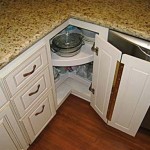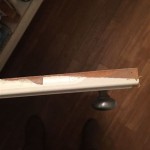What Are The Tiny White Bugs In My Kitchen?
Discovering tiny white bugs in the kitchen can be a disconcerting experience. These minuscule creatures can appear suddenly, often congregating around food sources, moist areas, or storage spaces. Identifying the specific type of bug is crucial for implementing effective control and prevention measures. Several different species of small, white insects can infest kitchens, each with distinct characteristics, habits, and preferred environments.
Accurate identification involves careful observation of the bugs' physical features, behavior, and the location where they are most frequently found. Size, shape, color variations (some may appear translucent or off-white rather than pure white), and the presence of wings or antennae can provide important clues. The type of food they are attracted to, whether it's stored grains, produce, or sugary substances, can also help narrow down the possibilities. Knowing the specific insect infesting the kitchen is the first step towards a successful eradication strategy.
Common Culprits: A Detailed Look
Several types of tiny white bugs are frequently encountered in kitchens. These include mites, springtails, psocids (booklice), and occasionally, immature stages of other insects such as mealybugs or aphids. Each of these pests has unique characteristics and preferred habitats that influence their presence and persistence within the kitchen environment.
Mites: Mites are tiny arachnids, not insects, and many species are nearly microscopic. Some types of mites can infest stored food products like flour, grains, and cheese. These are often referred to as "grain mites" or "cheese mites." They thrive in humid environments and can multiply rapidly. Their presence is often indicated by a dusty or powdery appearance on infested food. Certain types of house dust mites, although more commonly found in bedding, can also be present in kitchens, particularly in damp areas or if food particles accumulate.
Springtails: Springtails are small, wingless insects known for their ability to jump using a tail-like appendage called a furcula. They are typically found in damp environments with high humidity, such as near leaky pipes, sinks, or in potted plants. They feed on mold, fungi, and decaying organic matter. While they don't directly damage food, their presence indicates a moisture problem that needs to be addressed.
Psocids (Booklice): Despite their name, booklice are more often found in kitchens than in libraries. These tiny, pale-colored insects feed on mold and fungi that grow in damp environments. They are commonly found in pantries, cupboards, and around windowsills where moisture tends to accumulate. They thrive in humid conditions and are often associated with damp or poorly ventilated areas. Booklice do not bite or sting and are primarily a nuisance pest.
Mealybugs and Aphids (Immature Stages): While adult mealybugs and aphids are typically found on plants, their immature stages (nymphs) can sometimes be found in kitchens, particularly if houseplants are present. These nymphs are small, white, and slow-moving. They feed on plant sap and can be introduced into the kitchen on infested produce or houseplants. Their presence may indicate a larger infestation on nearby plants.
Identifying the Specific Bug: A Practical Guide
To accurately identify the tiny white bugs in your kitchen, observe the following characteristics:
Size and Shape: Note the approximate size of the bugs. Are they microscopic, or are they large enough to be easily seen with the naked eye? Consider their shape. Are they elongated, round, or oval? Are they segmented? Mites are typically very small and round, while springtails are elongated and have a distinct jumping ability. Psocids are small and soft-bodied, resembling lice. Immature mealybugs or aphids are often oval-shaped.
Color and Appearance: While the bugs are described as "white," are there any variations in color? Are they translucent, off-white, or creamy? Do they have any distinguishing marks or patterns? Mites may appear dusty or powdery, while springtails can have a slightly grayish or yellowish tint. Psocids are often translucent or pale brown. Immature mealybugs may have a waxy coating.
Movement and Behavior: Observe how the bugs move. Do they crawl slowly, jump, or fly? Springtails are known for their jumping ability, while mites typically crawl slowly. Psocids move at a moderate pace. Note where the bugs are most frequently found. Are they around food storage areas, sinks, windowsills, or houseplants? Their preferred location can provide clues about their identity.
Habitat and Food Source: Examine the areas where the bugs are present. Are they near sources of moisture, such as leaky pipes or damp areas? Are they infesting stored food products, such as flour, grains, or spices? Are they found on or near houseplants? Mites are often found in infested food, springtails in damp areas, psocids in pantries and cupboards, and mealybugs or aphids on plants. The type of food or environment they are associated with is a critical identifier.
Use of Magnification: Due to their small size, a magnifying glass or a macro lens on a smartphone can be helpful for observing these tiny bugs in detail. Magnification can reveal distinguishing features that are otherwise difficult to see, such as the presence of antennae, legs, or body segments. Close-up images can also be compared to online resources and insect identification guides.
Effective Control and Prevention Strategies
Once the type of bug has been identified, appropriate control and prevention measures can be implemented. The strategies employed will vary depending on the specific insect and the severity of the infestation. A combination of sanitation practices, environmental modifications, and targeted treatments is often the most effective approach.
Sanitation: Thorough cleaning is essential for controlling and preventing infestations of tiny white bugs. This includes regularly sweeping and vacuuming the kitchen, paying particular attention to cracks and crevices where food particles and moisture can accumulate. Clean up spills immediately and avoid leaving food out in the open. Empty and clean garbage cans regularly. Store food in airtight containers to prevent access by pests. Regularly inspect stored food products for signs of infestation, such as webbing, frass (insect droppings), or live insects.
Moisture Control: Many tiny white bugs thrive in damp environments, so controlling moisture is crucial. Repair any leaky pipes or faucets. Ensure proper ventilation in the kitchen, particularly in areas prone to moisture buildup, such as under sinks and in pantries. Use a dehumidifier to reduce humidity levels. Avoid overwatering houseplants and ensure they have proper drainage. Remove standing water from plant saucers.
Targeted Treatments: Depending on the type and severity of the infestation, targeted treatments may be necessary. For mites infesting stored food, discard any infested products and thoroughly clean the storage area. Consider using diatomaceous earth (DE), a natural insecticide made from fossilized diatoms, to control mites and other insects. DE is non-toxic to humans and pets but is abrasive to insects, causing them to dehydrate and die. Apply DE to cracks and crevices where insects are likely to travel. For springtails and psocids, focus on reducing moisture levels and treating infested areas with an appropriate insecticide. Insecticidal soaps or sprays can be effective for controlling mealybugs and aphids on houseplants.
Professional Assistance: In cases of severe or persistent infestations, it may be necessary to seek professional assistance from a pest control company. A qualified pest control technician can accurately identify the type of insect and recommend the most effective treatment options. They can also provide guidance on implementing long-term prevention strategies.
Preventive Measures: Preventing future infestations is as important as controlling existing ones. Regularly inspect the kitchen for signs of pests. Store food in airtight containers. Maintain a clean and dry environment. Seal cracks and crevices to prevent pests from entering the kitchen. Practice good sanitation habits. By taking these preventive measures, you can significantly reduce the risk of future infestations of tiny white bugs in your kitchen.
Understanding the Bigger Picture: The Ecology of Kitchen Pests
The presence of tiny white bugs in the kitchen often reflects an underlying imbalance in the local environment. These insects are typically attracted to conditions that favor their survival and reproduction, such as high humidity, abundant food sources, and sheltered habitats. Understanding the ecological factors that contribute to infestations can help in developing more sustainable and effective control strategies.
The kitchen ecosystem is a complex interplay of living organisms, including humans, insects, and microorganisms. Food waste, spills, and crumbs provide a readily available food source for many insects, while moisture and humidity create favorable conditions for mold and fungal growth, which in turn attracts insects like springtails and psocids. The presence of houseplants introduces another potential food source for insects like mealybugs and aphids.
By understanding the ecological relationships between these different elements, it is possible to create a less hospitable environment for pests. This can be achieved through a combination of sanitation practices, environmental modifications, and the adoption of integrated pest management (IPM) strategies. IPM focuses on preventing pest problems by addressing the underlying causes of infestations, rather than relying solely on chemical treatments.
For example, addressing moisture problems by repairing leaks and improving ventilation can significantly reduce the attractiveness of the kitchen to springtails and psocids. Storing food in airtight containers and regularly cleaning up spills and crumbs can eliminate food sources for mites and other insects. Introducing beneficial insects, such as ladybugs, can help control populations of mealybugs and aphids on houseplants.
By adopting a holistic approach to pest management, it is possible to create a healthier and more sustainable kitchen environment that is less susceptible to infestations of tiny white bugs and other pests. This requires a shift in mindset from simply reacting to pest problems to proactively managing the kitchen ecosystem to prevent them from occurring in the first place.

What Are Those Tiny White Bugs Around Your Home

What Are Those Tiny White Bugs In Your House Bug Out Pest Control And Exterminator Services

16 Bizarre Tiny White Bugs That Look Like Dust And Lint

9 Commonly Found Little Bugs That Looks Like Lint Or Dust A Z Animals

What Are Small Clear White Bugs In The House Upgradedhome Com

Types Of White Bugs Including Tiny Pictures And Identification

7 Deceptive Small Clear White Bugs In Your House

Tiny White Things In Worm Bin Red Composting

10 Small Clear White Bugs In The House Includes Mites

5 Small Clear White Bugs And Mites In House Identification Control Pest Samurai
Related Posts








